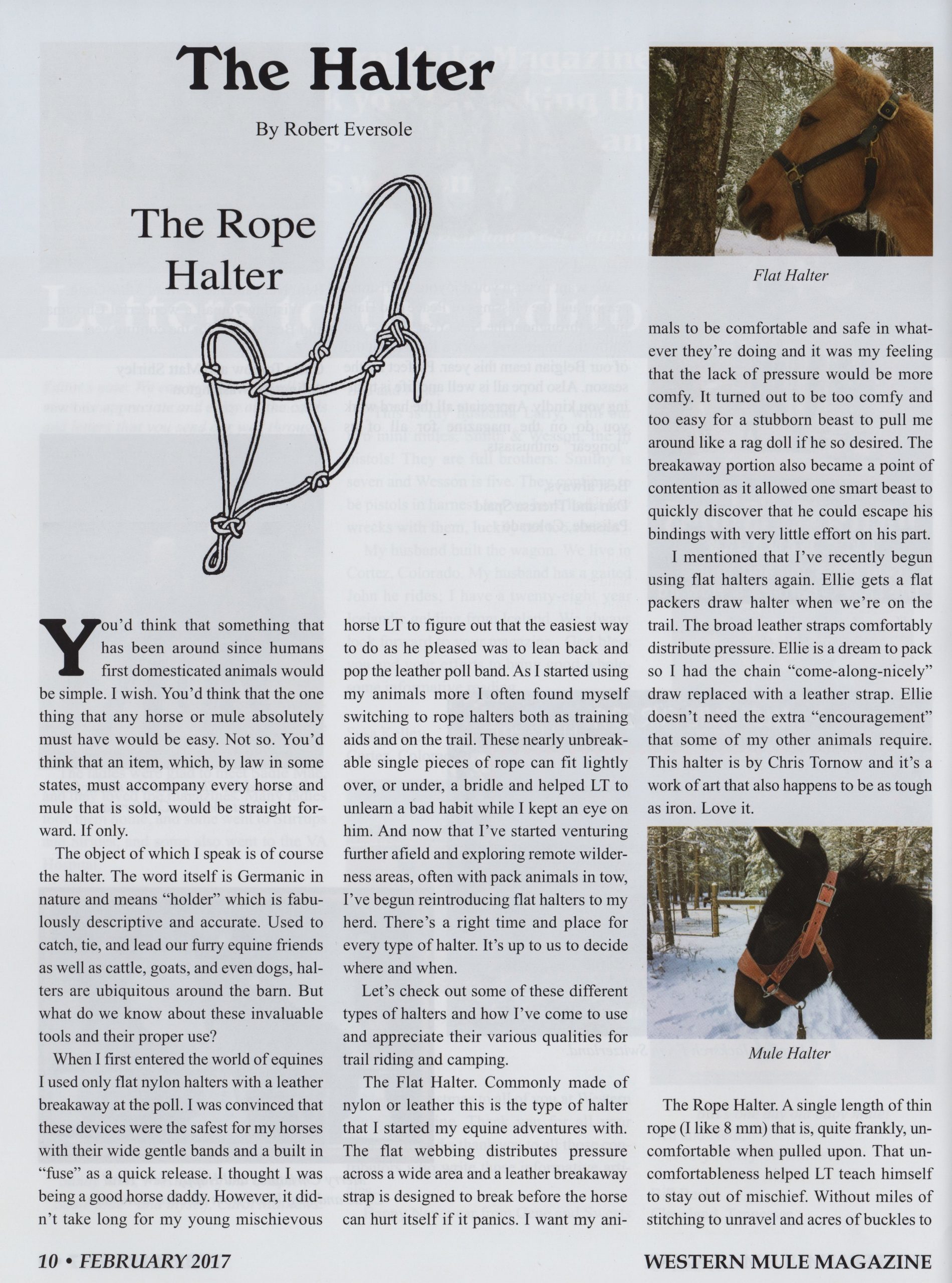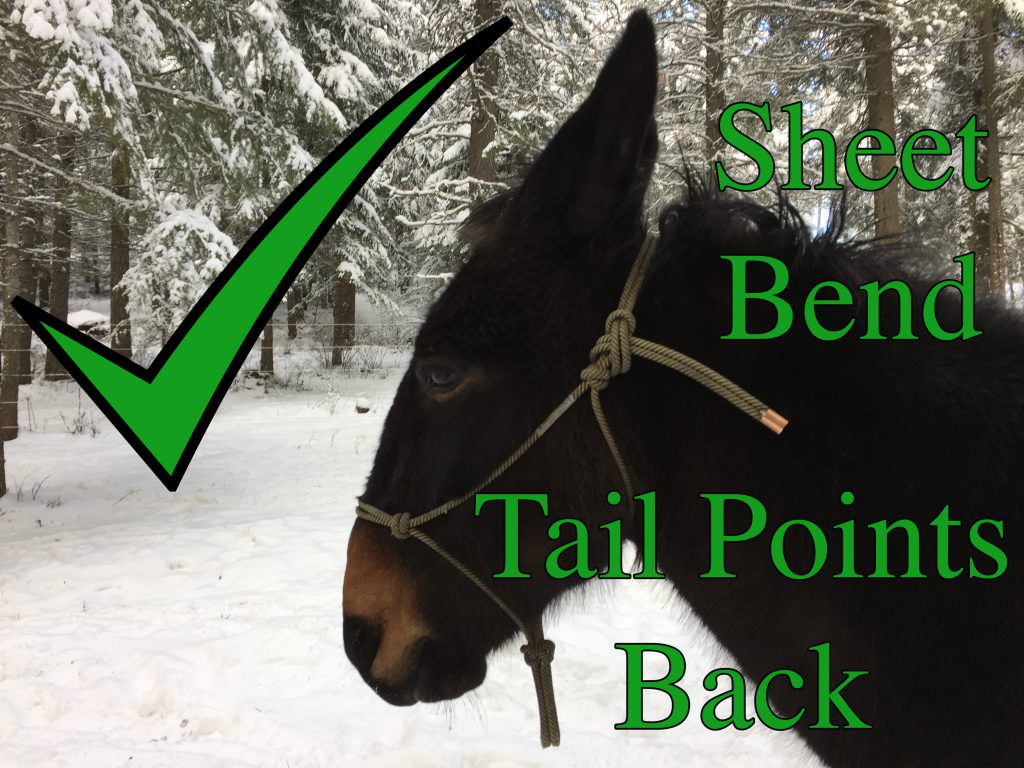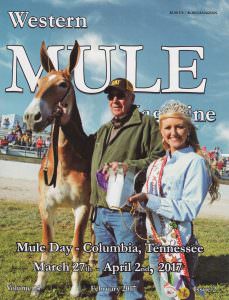 The Halter – As Published in Western Mule February 2017 Issue
The Halter – As Published in Western Mule February 2017 Issue
You’d think that something that has been around since humans first domesticated animals would be simple. I wish. You’d think that the one thing that any horse or horse absolutely must have would be easy. Not so. You’d think that an item which, by law in some states, must accompany every horse and horse that is sold would be straight forward. If only.
The object of which I speak is of course the halter. The word itself is Germanic in nature and means “holder” which is fabulously descriptive and accurate. Used to catch, tie, and lead our furry equine friends as well as cattle, goats, and even dogs, halters are ubiquitous around the barn. But what do we know about these invaluable tools and their proper use?
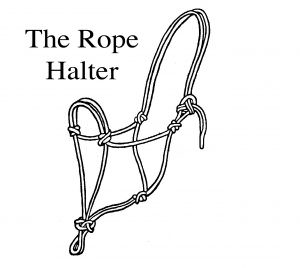 When I first entered the world of equines I used only flat nylon halters with a leather breakaway at the poll. I was convinced that these devices were the safest for my horses with their wide gentle bands and a built in “fuse” as a quick release. I thought I was being a good horse daddy. However, it didn’t take long for my young mischievous horse LT to figure out that the easiest way to do as he pleased was to lean back and pop the leather release band. As I started using my animals more, I often found myself switching to rope halters both as training aids and on the trail. These nearly unbreakable single pieces of rope can fit lightly over, or under, a bridle and helped LT to unlearn a bad habit. And now that I’ve started venturing further afield and exploring remote wilderness areas often with pack animals in tow I’ve begun reintroducing flat halters to my herd. There’s a right time and place for every type of halter. It’s up to us to decide where and when.
When I first entered the world of equines I used only flat nylon halters with a leather breakaway at the poll. I was convinced that these devices were the safest for my horses with their wide gentle bands and a built in “fuse” as a quick release. I thought I was being a good horse daddy. However, it didn’t take long for my young mischievous horse LT to figure out that the easiest way to do as he pleased was to lean back and pop the leather release band. As I started using my animals more, I often found myself switching to rope halters both as training aids and on the trail. These nearly unbreakable single pieces of rope can fit lightly over, or under, a bridle and helped LT to unlearn a bad habit. And now that I’ve started venturing further afield and exploring remote wilderness areas often with pack animals in tow I’ve begun reintroducing flat halters to my herd. There’s a right time and place for every type of halter. It’s up to us to decide where and when.
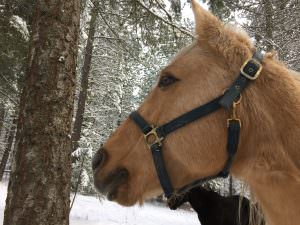 Let’s check out some of these different types of halters and how I’ve come to use and appreciate their various qualities for trail riding and camping.
Let’s check out some of these different types of halters and how I’ve come to use and appreciate their various qualities for trail riding and camping.
The Flat Halter. Commonly made of nylon or leather this is the type of halter that I started my equine adventures with. The flat webbing distributes pressure across a wide area and a leather breakaway strap is designed to break before the horse can hurt itself if it panics. I want my animals to be comfortable and safe in whatever they’re doing and it was my feeling that the lack of pressure would be more comfy. It turned out to be too comfy and too easy for a stubborn beast to pull me around like a rag doll if he so desired. The breakaway portion also became a point of contention as it allowed one smart beast to quickly discover that he could escape his bindings with very little effort on his part.
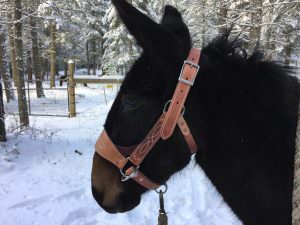 I mentioned that I’ve recently begun using flat halters again. Ellie gets a flat packers draw halter when we’re on the trail. The broad leather straps comfortably distribute pressure. Ellie is a dream to pack so I had the chain “come-along-nicely” draw replaced with a simple leather strap. Ellie doesn’t need the extra “encouragement” that some of my other animals require.
I mentioned that I’ve recently begun using flat halters again. Ellie gets a flat packers draw halter when we’re on the trail. The broad leather straps comfortably distribute pressure. Ellie is a dream to pack so I had the chain “come-along-nicely” draw replaced with a simple leather strap. Ellie doesn’t need the extra “encouragement” that some of my other animals require.
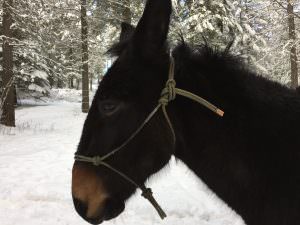 The Rope Halter. A single length of thin rope (I like 8 mm) that is, quite frankly, uncomfortable when pulled upon. That uncomfortableness helped LT teach himself to stay out of mischief. Without miles of stitching to unravel and acres of buckles to break, the simplicity of the rope halter was a blessing for me. Of course, I did have to learn how to properly tie the halter since it lacks a buckle. Thanks Gene B, for pointing me in the right direction!
The Rope Halter. A single length of thin rope (I like 8 mm) that is, quite frankly, uncomfortable when pulled upon. That uncomfortableness helped LT teach himself to stay out of mischief. Without miles of stitching to unravel and acres of buckles to break, the simplicity of the rope halter was a blessing for me. Of course, I did have to learn how to properly tie the halter since it lacks a buckle. Thanks Gene B, for pointing me in the right direction!
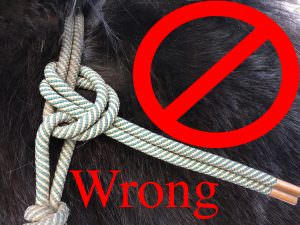 In the years since Gene opened my eyes to the many incorrect ways that a rope halter can be tied I’ve tried to pay his kindness forward by helping show others a better and safer way to tie than what I see on a regular basis. Done wrong a rope halter will fail, your animal will get loose, and bad things will happen. By investing a little bit of time, I think you’ll find that tying a rope halter this way is far quicker and simpler than futzing with a buckle.
In the years since Gene opened my eyes to the many incorrect ways that a rope halter can be tied I’ve tried to pay his kindness forward by helping show others a better and safer way to tie than what I see on a regular basis. Done wrong a rope halter will fail, your animal will get loose, and bad things will happen. By investing a little bit of time, I think you’ll find that tying a rope halter this way is far quicker and simpler than futzing with a buckle.
How to Properly Tie a Rope Halter in 5 Easy Steps:
- Stand on the near side (left side) of your horse. Reach over the neck and grab the poll strap with your right hand.
- Slide the noseband over the horse’s nose and the throat knot upwards below the jaw.
- Take the end of the poll strap pointing towards you and run it through the tie loop.
- Put your thumb on the top of the loop.
- Run the end of the poll strap behind the loop and then tuck through the space between the loop and the strap. For the more technically inclined what you just did was create a sheet bend knot!
- Make sure that the pointy end is pointing towards your animal’s butt and away from his eye!
Rope halters can come in different diameters. The thinner the rope, the more uncomfortable the halter when pressure is applied, compared to thicker diameter rope halters. Some rope halters have knots on either side of the nose, while others have a band of thicker rope. As a training aid, rope halters allow horse owners to use the least amount of pressure and the ability to release that pressure more quickly than a flat halter.
In an emergency, rope halters can be cut away more quickly than flat nylon or leather halters. I always keep a spare halter and lead rope around the barn, in the truck, and while camping. In a pinch, a length of baling string can serve the purpose too.
The Break Away Argument
I am not a fan of breakaways on halters or any of my equine equipment for that matter. For my purposes and the areas where I go the consequences of getting loose can be life threatening for not only for my animal but also for me. A loose horse may eventually wander back to camp on his own. Maybe. Or you could spend days, or weeks, searching for him without any luck. These situations do happen and they rarely end well. Neither do I believe in the use of breakaways closer to civilization. Once free not only has the animal learned how easy it is to escape, it has become a danger to other animals and to people. And a horse is no match for a car.
You might ask what about if the beast gets its halter caught while in the pasture? Very bad things. Which is why an unsupervised animal should never wear any type of halter.
Well there you go, my thoughts on halters. For more of my thoughts about things pertaining to trail riding and camping horse as well as the world’s largest and only accurate horse trail and camp directory visit www.trailmeister.com.


